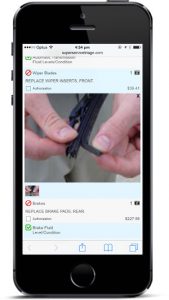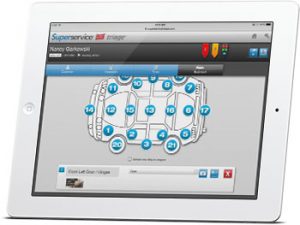3 Steps to Convert Customer Satisfaction to Customer Loyalty.
 With favourable trading conditions and new models, many dealerships are realising increased new car sales. The real challenge for dealers however remains maintaining the customer relationship after the sale. Sure the customer may leave the dealership with a big smile and delighted with their new car, but is that where it all ends?
With favourable trading conditions and new models, many dealerships are realising increased new car sales. The real challenge for dealers however remains maintaining the customer relationship after the sale. Sure the customer may leave the dealership with a big smile and delighted with their new car, but is that where it all ends?
Here are 3 tips to convert new car sales into service sales:
- Educate, Reinforce and Build Relationships from the get-go
It’s dangerous to assume that all new vehicle owners possess a proactive attitude when it comes to maintaining their new vehicle. On delivery, take the opportunity to reinforce the importance of regular visits to the service department as per the automaker’s recommendations. If time permits, allocate a few minutes to a quick introduction to the Service Department and/or Service Manager.Many vehicle owners may assume that the quality of aftersales service at the dealership is the same to that provided by aftermarket chains and garages. A quick chat with the Service Manager can dispel this inaccuracy. Explaining the benefits of OE parts, approved repair tools and factory trained technicians in maintaining vehicle residual value and occupant safety; helps strengthen the customer’s appreciation of genuine service.If the dealership offers an online self-serve service booking option such as Superservice Connect™, delivery is the perfect time to demonstrate its ease and convenience. - A Picture is Worth 1000 Words
In an unfamiliar situation such as a service department, a digital process for quoting and repair recommendations helps build trust and confidence in the dealership and staff, while facilitating a quicker service experience.Loren Campbell, General Manager of Redlands Auto Plaza in Redlands, CA believes that the service experience should be transparent, quick and simple: “You shouldn’t have the customer walking up to the cashier saying, ‘What is this charge?’ and then having the cashier trying to find the Service Advisor. Time is the only thing we have to sell,” Campbell said. “The process is the key: quicker and simpler. That’s what customers want.”Using photo and video capture from a tablet based MPI system; technicians are empowered to visually communicate required repairs quickly on the spot, or via email. Combining photo and video evidence of repairs to an inspection report and a professional VIN-precise quote, presents the customer with the right amount of information to make a quick, yet informed decision about their service needs – without getting bogged down in confusing technical verbiage or scrawled handwriting. - Put Yourself in the Customer’s Shoes
 When in doubt about the level of trust, transparency and engagement of your service experience there is one easy test: put yourself in the customer’s shoes. Would you be a repeat customer to your service department?Encouraging feedback on the day of the service is a great way to test whether you’ve met the customer’s expectations on the day. A digital tablet-based CSI survey shows that you’re willing to listen and acknowledge the opinion of your customers, and that you’re committed to improvement. If the survey uncovers issues or negative sentiment, going the extra mile to resolve these on-the-spot goes a long way to earning a repeat service booking, and may even result in a favourable Google review or Facebook post.“People remember how they were treated, and when you present exceptional customer service and concentrate on the consumer’s needs, your organization becomes a leader in that industry.” [Cheryl Hanna, Customerthink.com]
When in doubt about the level of trust, transparency and engagement of your service experience there is one easy test: put yourself in the customer’s shoes. Would you be a repeat customer to your service department?Encouraging feedback on the day of the service is a great way to test whether you’ve met the customer’s expectations on the day. A digital tablet-based CSI survey shows that you’re willing to listen and acknowledge the opinion of your customers, and that you’re committed to improvement. If the survey uncovers issues or negative sentiment, going the extra mile to resolve these on-the-spot goes a long way to earning a repeat service booking, and may even result in a favourable Google review or Facebook post.“People remember how they were treated, and when you present exceptional customer service and concentrate on the consumer’s needs, your organization becomes a leader in that industry.” [Cheryl Hanna, Customerthink.com]
